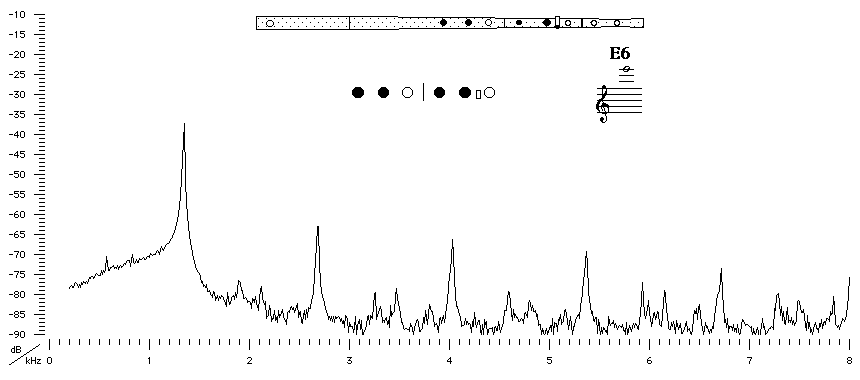| Acoustics of baroque, classical and modern flutes |
classical flute
|
E6 |

|
Acoustic and Fingering Schematic Non-specialist introduction
to acoustic impedance |
This fingering may be considered as E4 with a register hole. The fourth minimum produces E6. The fingering is out of tune - classical flutes intended to play in the third octave usually had extra keys, which allowed the designer more parameters to vary to maintain intonation over a wider range. (The dimensions of this instrument are based on those of a large-hole Rudall and Rose flute: R & R #655 from the Bate Collection in Oxford.)

Sound spectrum
of a classical flute with a flared foot played using fingering for E6.
![]()
![]()
![]()
![]()
![]() You can hear E6
played by Geoffrey Collins.
You can hear E6
played by Geoffrey Collins.
| Acoustic measurements are available for these flutes - modern B, modern C, classical C, classical D, classical flared, baroque Sound clips are available for modern B, classical flared and baroque |
To compare flutes, it is easiest to open a separate browser window for each instrument. |